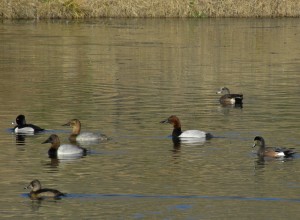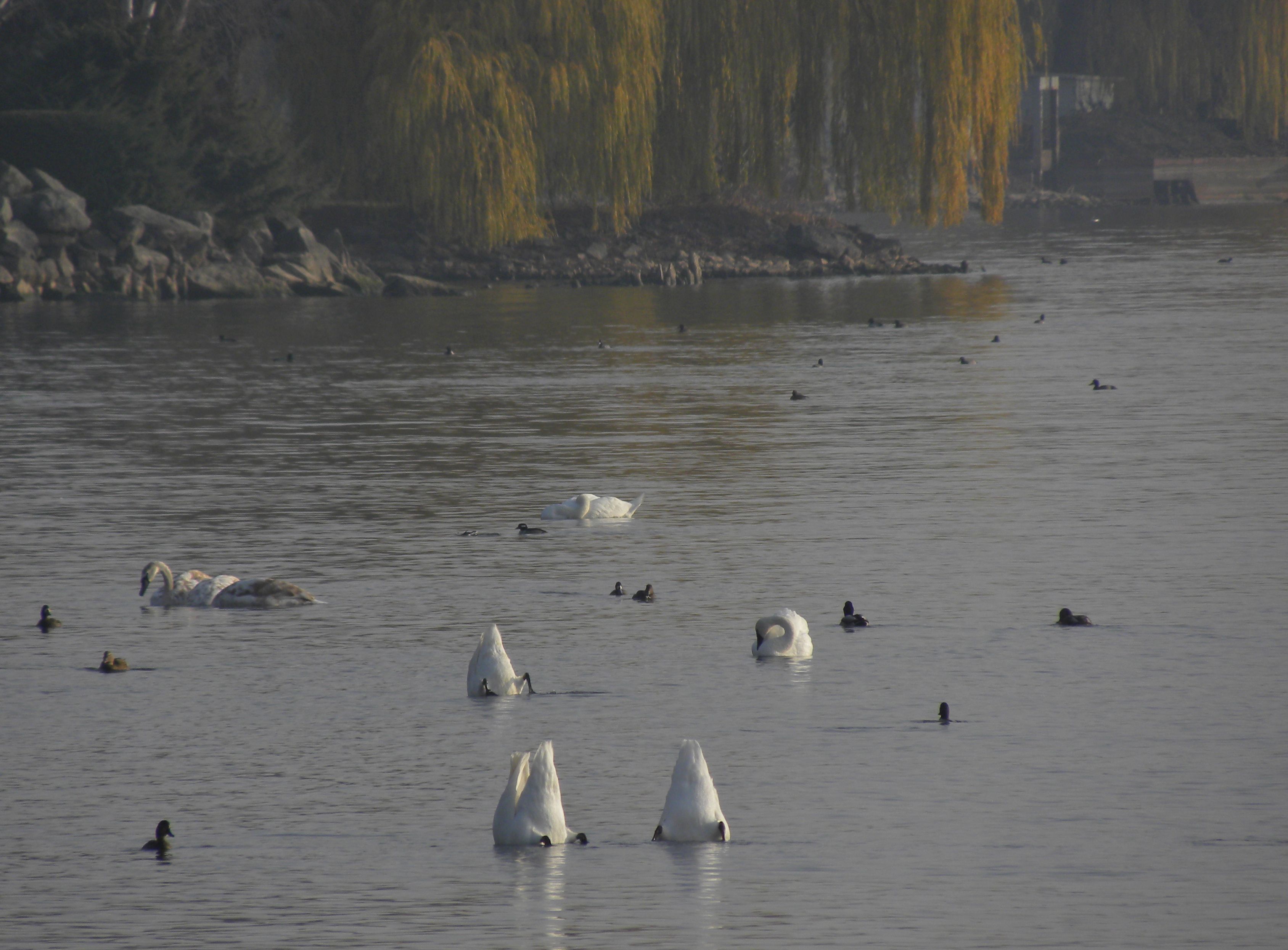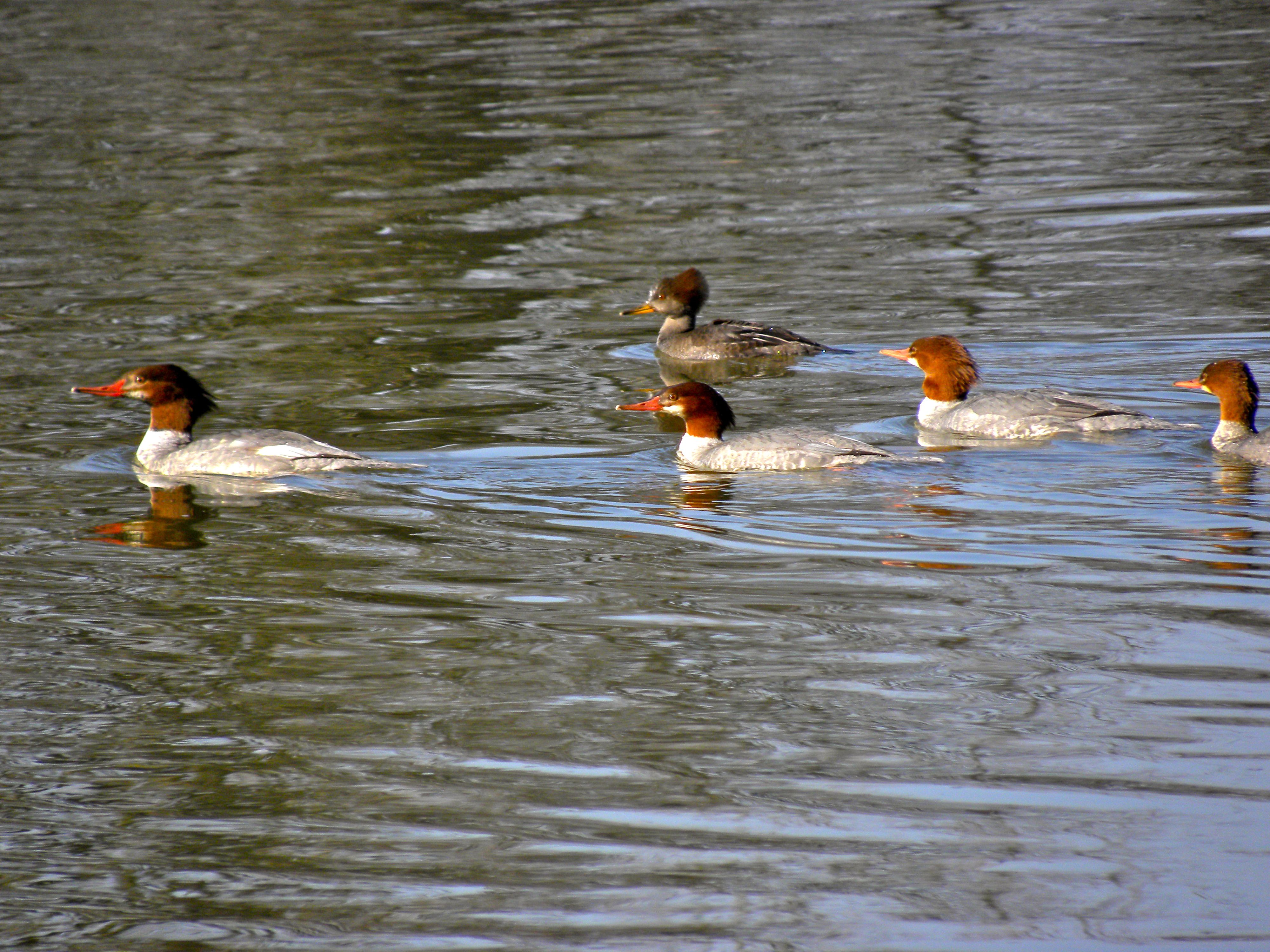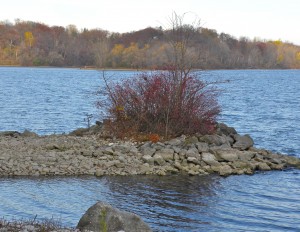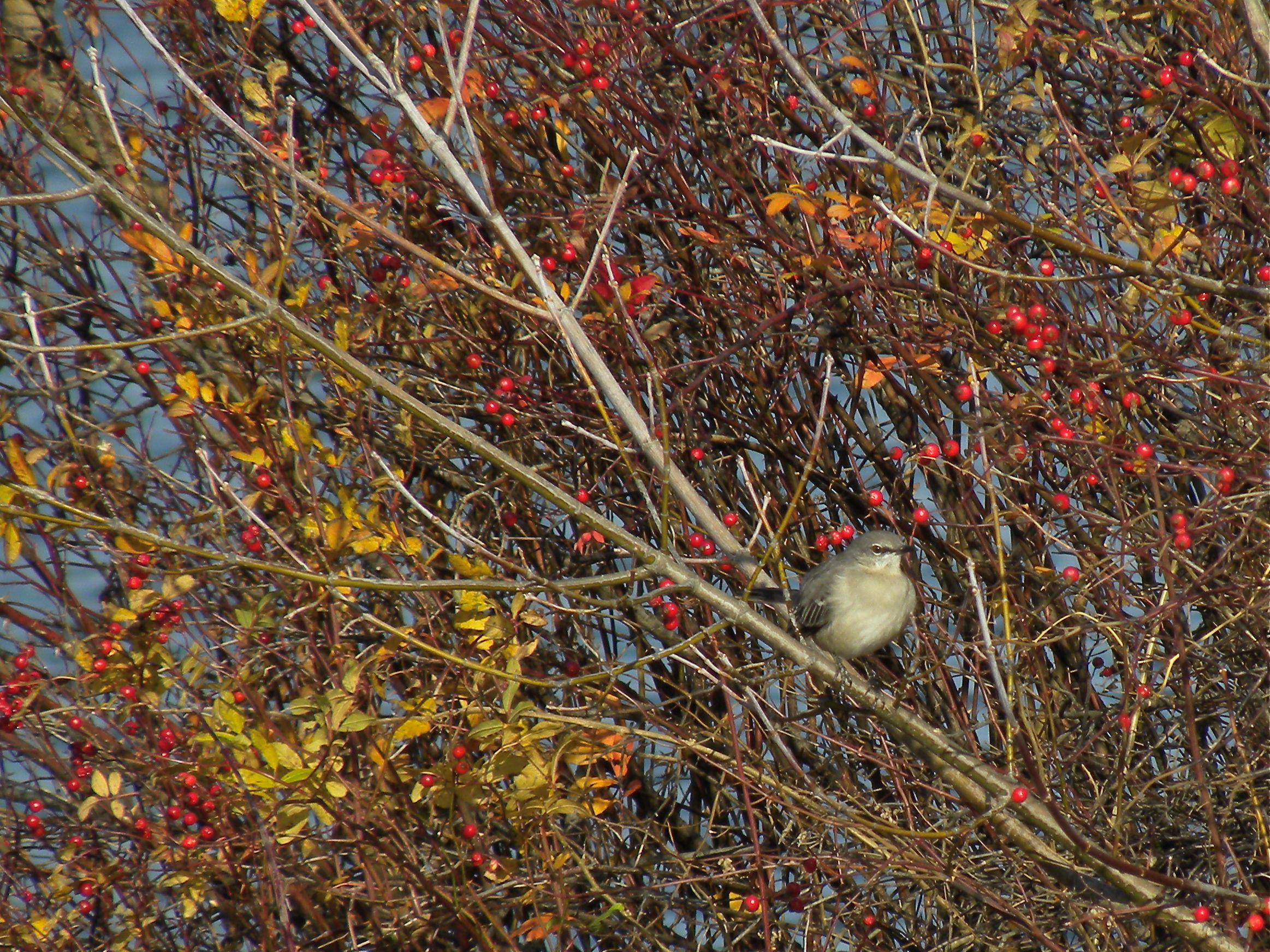November 21 2012. Millgrove ON. Friends of ours live on a quiet residential street in a nearby rural community, they’re surrounded mostly by farmland but it’s not far to plenty of woodland, wetlands and old pasture. Their back-yard bird feeder attracts a good variety of interesting visitors including Red-bellied and Downy Woodpeckers, House Finches and Pine Siskins. Like many feeders it’s easily visible from the dining room table, so it adds a certain interest and sometimes excitement to meal times.
Most feeders spill some seed, which attracts ground-feeding birds like Juncos, Tree Sparrows and Mourning Doves. The spilled seed also attracts nocturnal visitors, mice in particular who in turn attract owls; all sorts of bloodthirsty games go on in our back yards at night. I’ve heard many people speak of wintering Sharp-shinned Hawks that hangs around the neighbourhood, and some have witnessed a Mourning Dove or Junco make the ultimate sacrifice.
But, back to our rural friends. We had arranged to take a long hike with them yesterday afternoon. As we were doing the usual social “Hey how are you?” and ‘Where would you like to go?’ part of the visit, we spotted a young Cooper’s Hawk sitting quietly on an overhead branch of a large Norway Maple. I think it clearly understood that it was in habitat that suggested a well-fed winter ahead. We admired it for quite a while and it obligingly let me take several photographs, but eventually we tired of each other and the bird flew off when we weren’t looking. We duly headed off in beautiful late fall weather to one of my favourite birding destinations for a five or six kilometer hike. It was a great hike but this ‘favourite’ spot was just about devoid of bird life, that’s November I guess.
So the Cooper’s Hawk was quite deservedly Bird of the Day. Here it is, note the yellow iris and irregularly streaked belly both indicators that it’s a young bird hatched this year.
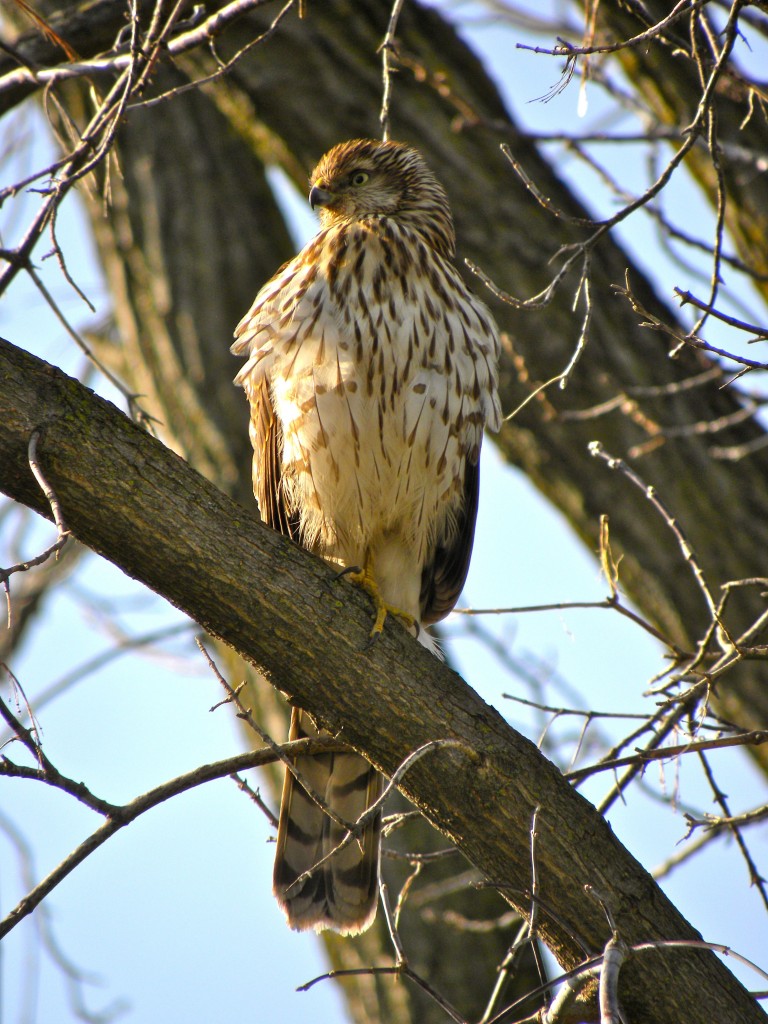
[slickr-flickr tag=sharpie]
